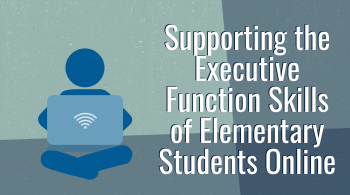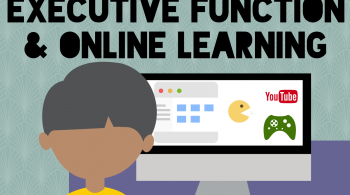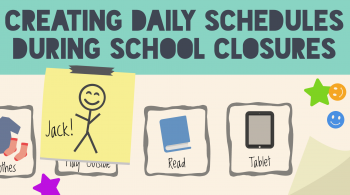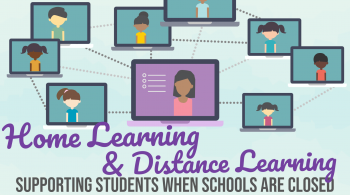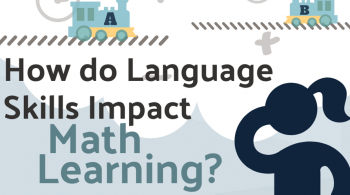November 28, 2017

Executive functions (EF) are a set of higher order cognitive skills that are necessary for academic success. They include inhibitory control, working memory, and flexible thinking. Just like other skills, EF can be learned and strengthened. Alexis Reed of the Boston Child Study Center gave us some tips for scaffolding EF skills as learners gain mastery of these important skills.
How is scaffolding for executive function (EF) different than scaffolding for content?
Learning doesn’t occur in isolation, rather it happens in context, through interactions with the environment and others. Because of this, I conceptualize scaffolding based on Vygotsky’s Zone of Proximal Development (ZPD). Providing scaffolds or “assists” can help an individual attain a new skill that may be just outside of their developmental zone.
A scaffold is meant to be a stepping-stone used to introduce and support a new skill to allow for practice. In terms of ZPD, I tend to imagine a ladder that a learner is climbing. Each rung is just a bit further to reach for than the next, but is not too far out of reach for the individual. Sometimes a temporary assist may be necessary to reach the next rung.
Scaffolding for EF and scaffolding for content tend to go hand in hand, because you need skills like inhibitory control, working memory, and flexible thinking in order to complete academic tasks. For students struggling with EF, we can break academic tasks down, or chunk them, to help with skills such as prioritizing, organizing, and problem solving. We can think of breaking these tasks into the “what” of learning and the “how” of learning. Students who struggle with EF need help with the “how” of learning. For example, scaffolding can be helpful with EF skills such as problem solving. By approaching a problem-solving task through guidance or collaboration from peers, adults, or supports in the environment, students can develop better problem solving skills.
What are some of the barriers to scaffolding for EF?
Scaffolds must be used appropriately, monitored, and adjusted overtime, with the goal of establishing mastery of a skill. Sometimes we allow students to become overly reliant on EF scaffolds because we forgot to fade the supports in order to work on skill mastery. For example, if an individual only uses self-monitoring strategies when another person or system alerts them, the learner may not have the opportunity to develop. EF scaffolds are not intended to create substitutes for learning skills, they should work in conjunction with explicit modeling and practice of a skill until an individual is ready to independently practice and show mastery.
A “one-size-fits all” approach can also present barriers. Learners are variable and using the same scaffolding strategy for all students may not explicitly target and train skills in the way that benefits everyone. As educators, we need to be intentional with how we choose scaffolds and strategies. We need to remember that the goal is to develop learners who advocate for and use scaffolds appropriately with autonomy.
What are some strategies you use to scaffold for EF?
Individuals with executive dysfunction often don’t realize they may not have a strategic approach to accomplishing a task. They may think that their way is the only way. In order to help teach new approaches I suggest the following:
- Explicitly teach the EF skill and expose individuals to options for increasing efficiency.
- Work with the individual to determine a path to accomplish the goal.
- Model key EF skills while engaging with the individual in the task.
- Demonstrate and prompt for self-monitoring toward the goal.
- Ask guiding questions and provide prompting to assist with flexible thinking and problem solving.
Teaching learners to use tools and strategies can also be helpful. I suggest using the following:
- Task lists and timers for support with time management.
- Using a calendar to schedule accountability check-ins for longer projects.
- Apps and digital devices for setting reminders.
- Chunking, or breaking assignments into smaller pieces. “When in doubt, chunk it out!”
Don’t forget to reinforce moves toward mastery! When you see a strategic, efficient, and intentional approach happening, be sure to acknowledge and specifically praise the behavior. The more frequently a learner has external feedback to shape their approach, the more frequently efficient approaches will be replicated and thus, skills strengthened.
Do you have any additional tips or things to keep in mind when scaffolding for EF?
Always start with an assessment. From there, you can determine the level of scaffolding that may be helpful. Again, what one learner needs in any given situation may not be the same thing that others may need at that same stuck point- one size does not fit all.
Determine where both strengths and weaknesses lie for each learner. This will allow for the increased awareness of strengths to bolster or support EF vulnerabilities, weaknesses, or skill deficits. Remember, EF skills can be supported, trained, and strengthened over time with appropriate interventions and consistency in reinforcement over time.







